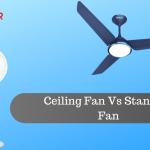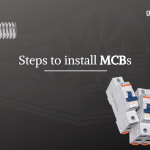Cable trays are one of the components in electrical wiring and distribution, especially in industrial and commercial installations. Know about the types of cable trays and applications from the top dealers of cable trays in Ahmedabad.
Types of cable trays and applications
Cable trays can be classified into different types of cable trays such as:
- Ladder type: Due to its ladder type construction, light weight and ease of access it is used in the majority of wiring. Ladder type cable trays permit easy air circulation and the rungs can be used to anchor cables and entry can be from any point. Water does not accumulate and spacing supports most types of cables.
- Solid bottom: the solid bottom type tray is used in shorter lengths and where EMI shielding is necessary. The trays are totally enclosed and there is no ventilation. The standard widths are 6, 12, 18, 24, 30 and 36 inches.
- Trough type: This type of cable tray provides more support to cables and has side rail protection. It can be used in lengths from 5 to 12 feet. The standard widths are 6, 12, 24, 18, 30 and 36 inches I depths from 3 to 6 inches.
- Channel type: This is a simple type and it is inexpensive too, used for short span supports. Widths are between 3 and 6 inches, depths from 1-1/4th inch to 1-3/4th inches in lengths up to 24 feet.
- Wire mesh type: This type of tray is generally used in telecom for lengths up to 8 feet. Widths are from 2 to 24 inches in depths of 1, 2 and 4 inches.
- Single rail: This is used in low voltage and power cable installation. It allows freedom of movement and fast installation. Widths are from 6 to 24 inches in depths of 3 to 6 inches and length up to 12 feet.
Materials of cable trays
Cable trays may be fabricated from various materials by cable tray manufacturers. Each material has its pros and cons. You can get a variety of cable trays in Ahmedabad from a dealer specializing in industrial electrical products.
- Aluminium: Cable trays may be extruded from Aluminum and have the advantage of lightweight and corrosion resistance.
- Steel: Cable trays may be manufactured from steel using roll forming process. Steel trays are strong and durable but are heavier and can corrode unless well maintained.
- Stainless steel: Stainless cable trays can be made from thinner gauge, have higher strength and corrosion resistance, making them ideal for chemical industries.
- Fibreglass: Fibreglass cable trays are usually pultruded or made by hand layup and can be made in a variety of thicknesses and lengths. Fibreglass is ideal for chemical and weather resistance and it is also insulating as well as fire resistant.
One may choose different types of cable trays for high voltage cables, power distribution cables, for sensitive wiring, for telecom and for optical cables. These can be sourced from cable tray manufacturers or dealers of cable tray in Ahmedabad.




